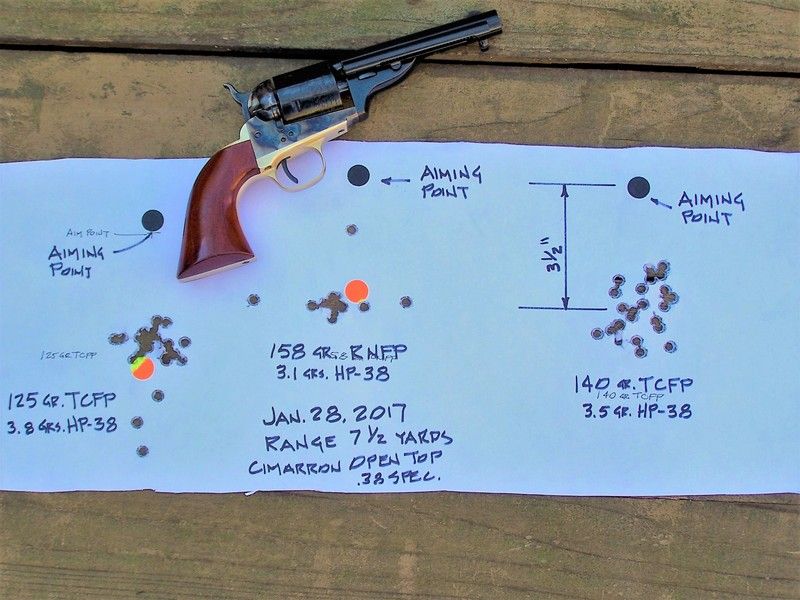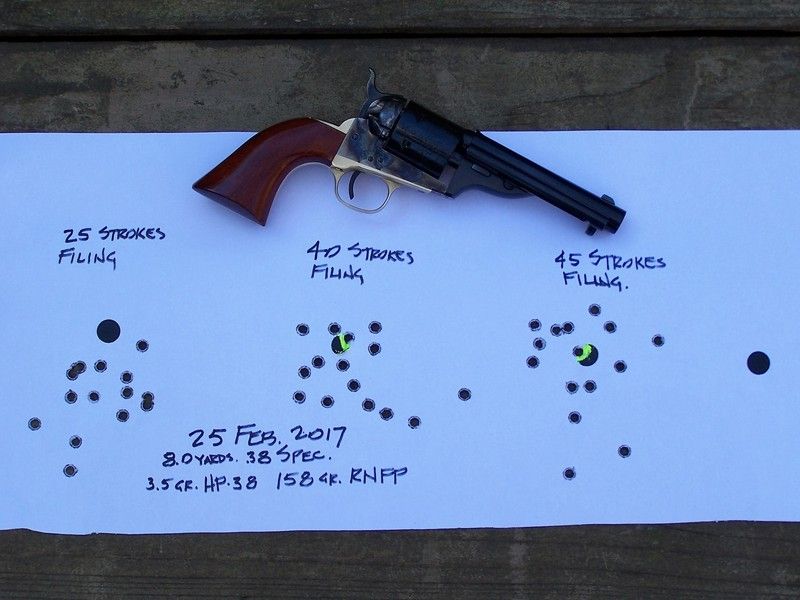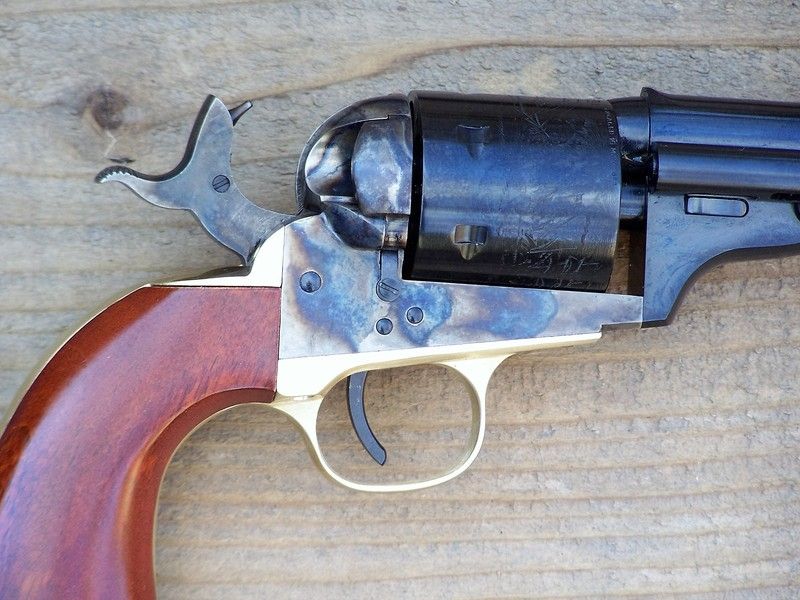Bob Wright
New member
I've been called to task many times for advocating filing the sights to sight in a handgun. Too many times I've been shown the target that analyzes what the shooter is doing wrong and how to compensate for it. And sort of had my knuckles slapped for advocating using a file to sight in, or adjusting my sights.
To those, I offer the following argument:
I bought a Cimarron Open Top 1872 Navy in .38 Special recently. First trip to the range produced these results:

I took a mill file to the range and carefully counted the strokes and fired groups. Here the results:

These groups are rather embarrassing, but both the gun and I can do better. These sights are not the best for precise shooting. the rear sight, on the end of the barrel, is a spraddle legged "M" (/\/\)while the front is an inverted "V." Rather hard to see. If I had use a rest or two handed hold, groups would have been better.
Bob Wright
To those, I offer the following argument:
I bought a Cimarron Open Top 1872 Navy in .38 Special recently. First trip to the range produced these results:

I took a mill file to the range and carefully counted the strokes and fired groups. Here the results:

These groups are rather embarrassing, but both the gun and I can do better. These sights are not the best for precise shooting. the rear sight, on the end of the barrel, is a spraddle legged "M" (/\/\)while the front is an inverted "V." Rather hard to see. If I had use a rest or two handed hold, groups would have been better.
Bob Wright

